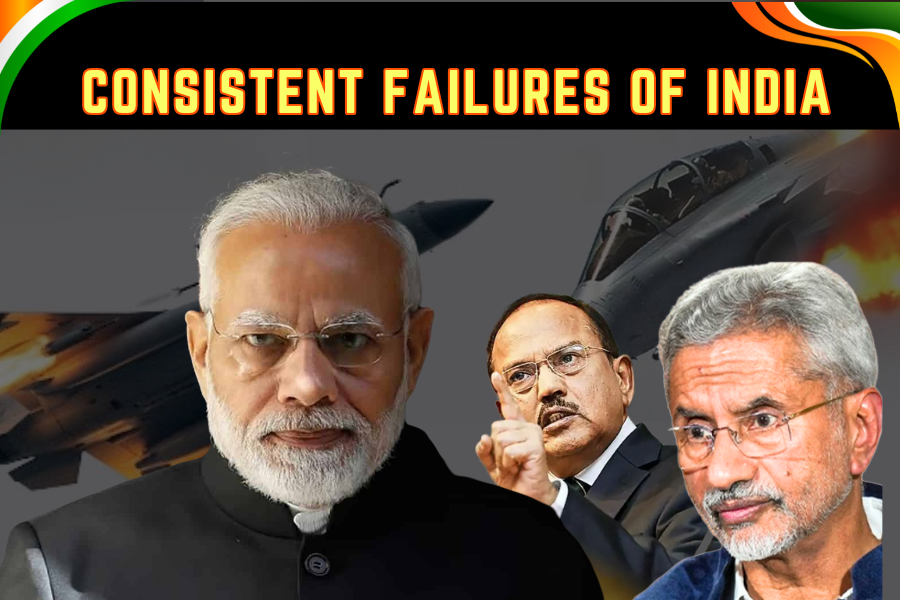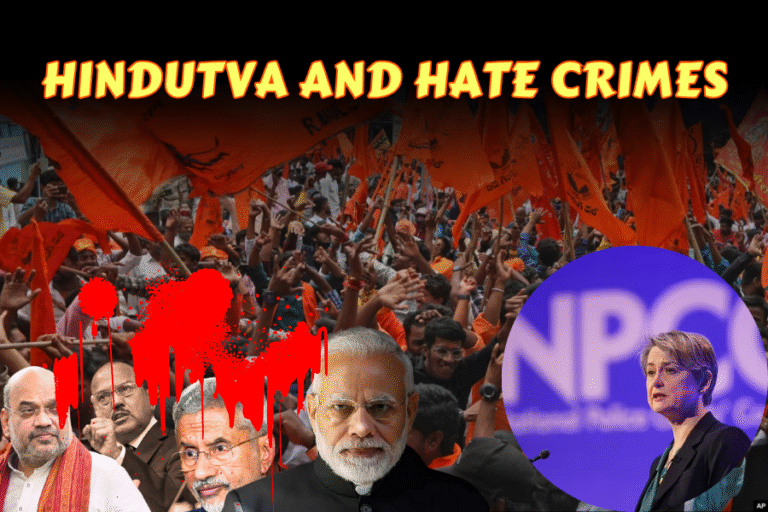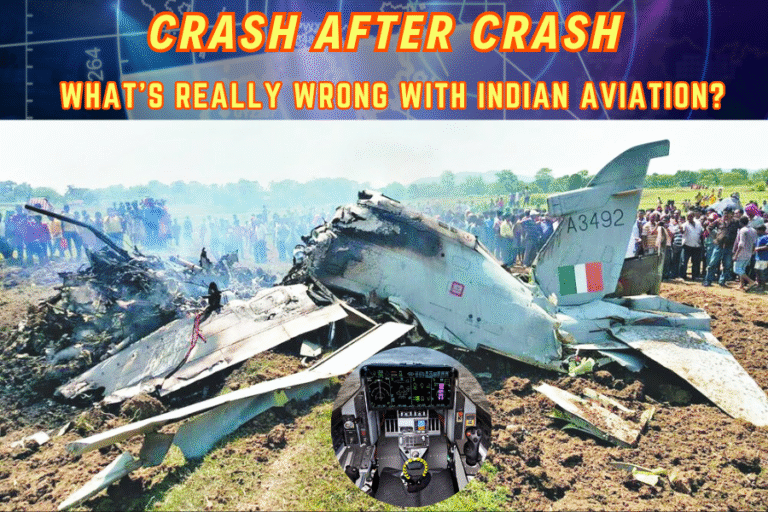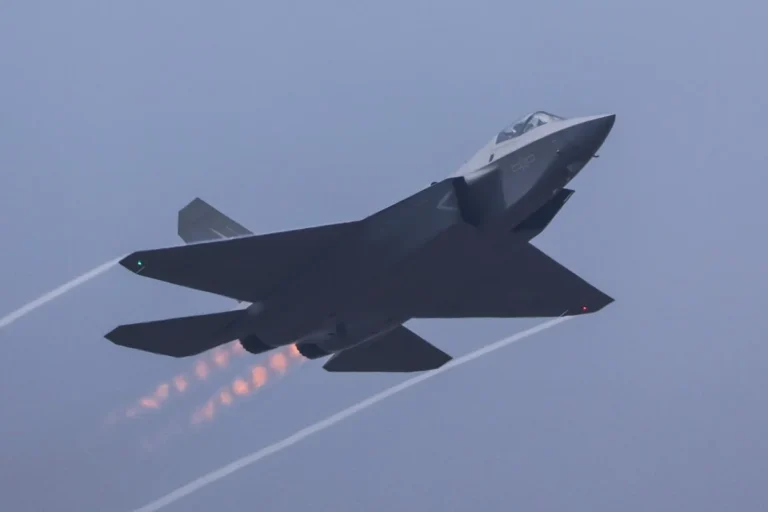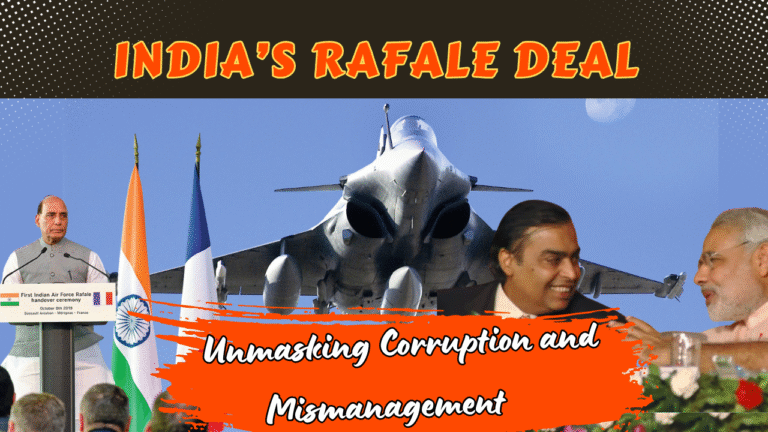(By Quratulain Khalid)
In the intricate web of contemporary international relations, India finds itself ensnared in a classic Catch-22 predicament—unable to sever its deep-rooted economic and strategic ties with the United States, yet increasingly drawn towards the Russia-China axis. This uneasy duality reveals the profound inadequacies of Prime Minister Narendra Modi and his foreign policy team, particularly External Affairs Minister S. Jaishankar and National Security Advisor Ajit Doval. Their attempts to navigate a complex and rapidly evolving multipolar world have been marred by consistent failures, diplomatic gaffes, economic missteps, and domestic polarization. Meanwhile, Pakistan, facing similar complexities, appears to adopt a pragmatic and more resilient diplomatic approach, underscoring New Delhi’s shortcomings.
India’s Post-Cold War Alignment and the Multipolar Shift
India’s post-Cold War foreign policy has been largely defined by its alignment with the West, especially the United States. This relationship brought economic dividends through outsourcing, direct foreign investment, and defence partnerships, steadily integrating India into the US-led global order. However, 2025 marks a pivotal moment when the unipolar world anchored by American dominance has transitioned toward multipolarity. The Ukraine conflict, US-China trade tensions, and a recalibration of major power politics have imposed new challenges for New Delhi’s foreign policy.
In response, Modi’s administration has pursued a delicate balancing act. The government courted Russia for discounted oil purchases and military spares, maintained deep ties within multilateral forums such as the Shanghai Cooperation Organisation (SCO), which is dominated by China and Russia, and continued alignment with the United States through strategic partnerships and technology transfers. Yet, this balancing act remains fraught and elusive; efforts to consolidate India’s regional influence have often fallen flat, as illustrated by the SCO Summit in Tianjin in 2025, where Modi failed to secure support to isolate Pakistan on terrorism allegations. Such diplomatic setbacks highlight a disconnect between India’s ambitions and its actual leverage.
The Modi Persona and Domestic Impact on Diplomacy
The public portrayal of Narendra Modi as a global statesman—a “Vishwa Guru” or world leader—is in large part a product of domestic propaganda machinery, known colloquially as the “Godi media.” This media apparatus, which amplifies government narratives with minimal scrutiny, constructs an image of Modi’s diplomatic mastery using carefully staged optics such as public laughter and overly familiar displays with international leaders. Yet beneath this veneer lie serious deficits: his perceived lack of diplomatic subtlety and occasional breaches of international protocol that reveal an underlying inferiority complex.
India’s economic growth narrative, especially the flagship “Make in India” initiative, owes much to the economic reforms and liberalisation policies instituted under former Prime Minister Manmohan Singh. Singh’s tenure delivered sustained GDP growth, foreign investment inflows, and poverty alleviation despite lacking Modi’s rhetoric or majoritarian political agenda.
However, the Bharatiya Janata Party’s (BJP) electoral successes have leaned heavily on Hindutva ideology—a majoritarian sentiment that has entrenched societal cleavages between Hindus and minorities, including Muslims, Christians, and Sikhs. This internal polarization undermines India’s secular democratic credentials, complicating diplomatic outreach and diminishing soft power on the global stage.
SCO Summit 2025: A Case Study in Diplomatic Failures
The SCO Summit held from 31 August to 1 September 2025 in Tianjin focused on artificial intelligence cooperation, counter-terrorism, and economic partnerships in a multipolar world. Modi’s ambitions to project India as a global bridge between East and West were bruised by the Summit’s outcomes.
India’s effort to sideline Pakistan over purported terrorism activities gained no traction, as Pakistan’s Prime Minister Shehbaz Sharif achieved reaffirmations for the China-Pakistan Economic Corridor (CPEC) and secured expanded counter-terrorism cooperation. This contrast exposed India’s diplomatic isolation and Pakistan’s rising regional clout.
More broadly, Modi’s bilateral meetings with Chinese President Xi Jinping and Russian President Vladimir Putin yielded no substantive agreements on border disputes or trade balances. The Indian media’s desperate recycling of four-year-old footage showing Modi embracing Xi and Putin failed to mask the reality of diplomatic impotence.
The Role of Key Foreign Policy Architects: Jaishankar and Doval
External Affairs Minister S. Jaishankar and National Security Advisor Ajit Doval hold primary responsibility for India’s foreign policy shortcomings. Jaishankar, with his Indian Foreign Service background, often emphasizes grand rhetoric over genuine engagement, alienating key partners through a preachy tone. His failed attempts to echo anti-Pakistan sentiments in international forums further isolate India.
Doval’s focus on covert operations and hardline stances has backfired. The May 2025 four-day military conflict with Pakistan ended in a humiliating defeat despite India’s material superiority. The missile strikes initiated by India were met with swift and effective retaliation, severely denting India’s regional stature and exposing severe intelligence and tactical flaws.
Military and Economic Consequences
India’s heavy investment in defence technology—from Rafale fighter jets from the France to Russian S-400 missile systems and Israeli drones—has been undercut by systemic weaknesses. The war revealed poor intelligence coordination, outdated doctrine, and overdependence on foreign hardware without cohesive indigenous integration.
Diplomatically, India’s standing declined. At the recent QUAD foreign ministers’ meeting (involving US, India, Japan, Australia), Jaishankar conspicuously failed to secure Pakistan’s designation as a terror sponsor state—a claim India has long pressed—indicating India’s isolation from even its closest strategic partners.
Economically, India faces mounting fallout. Continued Russian oil imports, defying US sanctions, triggered retaliatory 50% tariffs by the Trump administration on Indian exports to its largest market—the United States. This tariff threatens to reduce India’s GDP growth by 1-2%. Simultaneously, Saudi and other Arab oil suppliers have curbed crude supplies to Indian refiners citing sanction compliance, jeopardizing India’s energy security and heightening domestic fuel price inflation.
Pakistan’s Pragmatic Diplomacy as a Point of Contrast
While India flounders in its multipolar balancing act, Pakistan has adopted a more pragmatic approach. Islamabad has leveraged the SCO to secure key economic initiatives like CPEC, enhanced counter-terrorism cooperation, and maintained a neutral stance on global conflicts, preserving flexibility. This diplomatic steadiness enhances Pakistan’s regional relevance and international standing, even as India’s grandiosity unravels.
Conclusion: A Crucible of Incompetence and Propaganda
India’s consistent foreign policy failures under Modi result from a toxic mix of incompetence, overblown propaganda, and divisive politics. The superficial media image of Modi as a world statesman crumbles under hard geopolitical realities and Palermo diplomacy.
As Pakistan moves forward with pragmatic strategies, New Delhi faces an urgent imperative to recalibrate before continued missteps deepen isolation and erode influence. The world watches, waiting to see if India can genuinely rise as a responsible global power or remain trapped in illusions of grandeur, hemmed in by its diplomatic failures and self-inflicted divisions.

